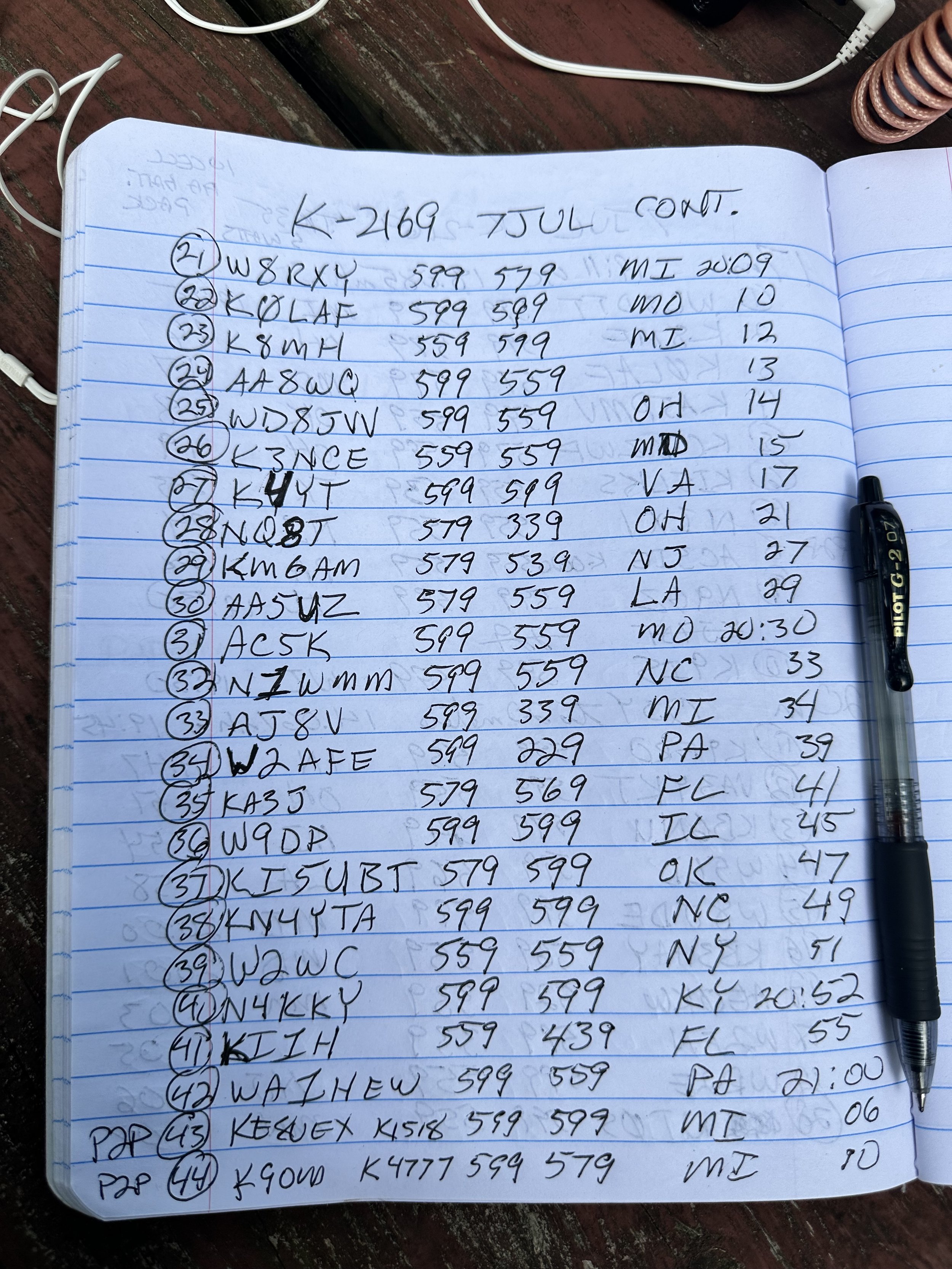Today is Sunday, 6 AUG 2023 and I had a small window of time to get in an activation in the late afternoon. Teresa also decided to ride with me so she could get out of the house and planned on using her computer to do some projects she had been wanting to do. I forgot she mentioned that she would need AC power and this turned into a problem for me or so I thought. The inverter I have in my truck is apparently not very “clean” from what I saw today on my S meter…once again so I thought.
We get to the park (K-2169) and I grab the photo you see of the storm front coming into view. This is when I realized I would need to hurry if I was going to setup in time. I throw out a counterpoise and stuck the 20 meter hamstick on the back of the truck and ran the coax into the cab. I simply taped up the connector to keep the rain out and got back in the truck just in time before the deluge began.
So then once in the cab with it raining buckets outside, I do some yoga moves to get turned around and uncrate the Ten Tec Argonaut 5 transceiver. Since it is in that huge military case in the back seat, it was not easy to get it out from the front seat with the doors closed and Teresa in the seat beside me. I finally get the radio loosed from the surly bonds of the hard case and setup on the armrest of the truck seat.
I learned something at this point. I had blamed the inverter and Teresa’s computer for the rf hash I was hearing on the radio. Well, turns out when you are setting up in an active thunderstorm that the atmosphere is charging and discharging constantly. The static buildup is audible and visible on the radio as I watched the S meter climb to S9+10dB, hold there for several seconds then a flash of light would happen and the noise floor would drop to S2 and I could hear other stations again. Then the process would start over…
I listened to this a couple of times fascinated by the phenomenon I was witnessing in real time in front of me. Then it occurred to me that the static discharge that was resetting the S meter to normal was LIGHTENING!!! “Good grief, I’m such an idiot” I thought… I hurriedly shut off the radio and disconnected the coax as fast as possible. I threw the cable into the back seat and waited on the rain to let up. I figured since it wasn’t grounded that it wouldn’t attract a lightning strike and I was right as it didn’t hit the antenna. That is my theory at least… Once the rain subsided to just a drizzle, I pulled the truck forward to get the counterpoise out of the grass, got out and quickly broke down the antenna and stowed it in the truck bed. Once back in the truck the rain picked back up and I threw in the towel at this point and just headed home.
Mother Nature has a cruel sense of humor at times though so just as soon as we cleared the park and was on HWY 136 headed back home, the rain literally stops and the clouds start to break up. I was too frustrated at this point so I just went on home instead. I don’t count this as a failed activation officially as I never sent a CQ, but in reality, I should as I had the entire station online and never made a single contact. That would make this the second failed activation in my entire POTA “career” you might say. I should have believed the weather man…errrr… app when it said a front was inbound. Next time I will pay attention.
I never even opened the logbook today…sad. I should have stuck it out 15 more minutes, I could have gotten an activation in by the end of the UTC day at least…
Thanks for following along, but the point of this article is to pay attention to the signs your radio gives you about thunderstorms. If you see the S meter climb and it has a ton of static on the band with a constant signal and then it just drops back to normal all at once and you either see a bright flash or hear thunder a few seconds later, this is probably the clouds and you might want to turn your radio off and disconnect the antenna…just as a precaution.
73
WK4DS - David














































































































































































































